Cold water does certainly cost less than a thermometer when making candy, but unfortunately you cannot use this temperature technique when deep frying, yeast proofing, jelly making or checking meat has reached a safe internal temperature. Because candy thermometers can measure higher temperatures, it makes them a valuable companion for a variety of cooking requirements.
In this review we look at the pros and cons are of each type different type of candy thermometer, whether the more traditional tall steel or glass bulb style, to the modern digital thermometers. Even if you already have the best candy thermometer in your kitchen, it still needs regular testing or calibrating, so in this review, we also offer some step by step tips on testing and calibrating for temperature accuracy.Quick Comparison: Top 10 Best Candy Thermometer
1. Habor Instant Read Digital Cooking, Candy Thermometer
Suitable for most cooking needs, including candy, the Habor digital thermometer (silver) can measure temperatures of between -58°F and 572°F. Its stainless steel probe is 4.7" long and gives a reading within 4 to 6 seconds of being placed in food. Various users have reported temperature variations when checked against other thermometers and some models appear to have an issue where the battery cover does not close properly - you may want to check this when you receive it.
This probe is not designed to stay in the food or pan during cooking, and the manufacturer explicitly asks that you remove it after a temperature check to extend its lifespan. This thermometer also comes with three year limited warranty and there is a ten minute auto shut-off to help preserve its battery life.Pros
Cons
2. Polder THM-515 Candy/Jelly/Deep Fry Thermometer
The Polder THM-515 mercury free cooking thermometer is a traditional steel style thermometer with a pan clip. It also has an insulated stay-cool handle. Suitable for a range of uses, including candy, the thermometer gauge includes key temperature stages such as for candy and deep frying.
This is a tall thermometer that measures a temperature range of between 75°F and 400°F and unlike many other types of thermometer, it is dishwasher safe for easier cleaning. Like all thermometers, it can be prone to temperature fluctuations, so you may want to calibrate it regularly.Pros
Cons
3. Digital Candy Thermometer CDN DTC450
The digital candy thermometer CDN DTC450 has an adjustable steel clip to attach it to the pan and a pocket clip. The display is large and easy to read, although a number of users report that the screen can be very difficult to read or may even pixelate as temperatures rise. This is suitable for use as a candy or a deep fry thermometer with a temperature range between 40°F and 450°F and you can either use its pre-programed settings or set up your own program. It also has an auto shut-off function.
There is an audible alarm that sounds before and during temperature targets. This thermometer is hand wipe only, made with 304 grade stainless steel and allows user re-calibration, although this model does not come with any instructions on how to re-calibrate. Some users have reported temperature discrepancies when checked against manual thermometers.Pros
Cons
4. Winco Deep Fry/Candy Thermometer
With a temperature range of between 100°F and 400°F, the Winco deep fry/candy thermometer is a tall thermometer with a pan clip and a hanging loop on the top. Some owners have experienced inaccurate readings from this, so you may want to test/calibrate it before using. Unfortunately, this thermometer does not come with a warranty or any returns policy, so even if faulty, you are unable to return.
Pros
Cons
5. Taylor Precision Products Classic Line Candy/Deep Fry Thermometer
The tempered glass Taylor Precision Products Classic Line candy/deep fry thermometer has a temperature range of between 100°F and 400°F. This is a traditional style thermometer filled with a blue food safe liquid that is easy to read through the magnified tube. There can be a tendency for the inner tube to condense, which can make it more difficult to read when in use.
This has an adjustable pan clip and it comes in a protective sleeve which is printed with a reference temperature guide. You just clean this by wiping over with a damp cloth and then drying. Like with any candy thermometer, it can be worth doing a quick calibration test with ice or boiling water before using.Pros
Cons
6. DiGi Digital Thermometer
Ideal for candy, meats and BBQ, the DiGi digital thermometer has a temperature range of between 40°F and 450°F. This thermometer uses a stainless steel probe for temperature readings and has a large, back-lit and easy to read LCD display with an auto shut-off function to help preserve battery life.
This thermometer is waterproof for rinsing under the tap, although some users have reported damage when placing in water, so you may want to treat it more as being showerproof. It also has an adjustable pan clip for easy fixing. You can calibrate this thermometer, although you may not be completely successful when doing it. It also comes with a money-back guarantee and a lifetime limited warranty.Pros
Cons
7. Gourmia GTH9185 Digital Spatula Thermometer
The Gourmia GTH9185 digital spatula thermometer is a silicone spatula spoon with a removable stainless steel probe thermometer running through it. This is an instant read thermometer and can measure between -58°F and 572°F. This spatula thermometer is made from silicone and food-grade ABS plastic which is free from BPA. Some users are not keen on the shape of the spatula, and there is also a risk of the thermometer coming loose from the spatula during use. This comes with a one year limited warranty from the manufacturer.
Pros
Cons
8. Wilton Candy Thermometer
A traditional steel thermometer, the Wilton candy thermometer is 14.7" tall and has an in-built pan clip to attach it to the side of your pan, although some users have found that the pan clip is less than robust and will come loose during use. It also has a hanging loop.
This thermometer measures a temperature range of between 60°F and 400°F which makes it suitable for a range of measuring needs.Pros
Cons
9. PBKay Digital Cooking Candy Liquid Thermometer
This digital candy thermometer comes with an adjustable pan clip so that you can leave it attached to the pan during cooking, and its stainless steel probe can give a temperature reading in 6 to 8 seconds. Its small circular digital display has a 15 minute auto shut-off function to preserve battery life, although there is no back light on the display which means you may find it difficult to read at times.
The temperature range of this thermometer is between -58°F and 572°F and it has a lifetime limited warranty from the manufacturer.Pros
Cons
10. CIA Master Collection Candy/Deep Fry Thermometer
The CIA Master Collection candy/deep fry thermometer has a large easy to read dial and stainless steel probe. Its pan clip is adjustable, although this may not attach to your pan as well as you would like. This thermometer also comes with a nut and wrench for you to calibrate it yourself. This thermometer is also NSF certified, which means it is suitable for use in commercial kitchens. It also comes with a lifetime limited warranty.
Pros
Cons
Things to Consider Before Buying a Candy Thermometer
The Different Types of Candy Thermometers
The steel candy thermometer is still a favorite for many of us as it will stay clipped to the side of the pan throughout cooking. This type of thermometer can be slow to give an accurate reading, may fall out of calibration quickly and always needs enough mixture in the pan to fully cover its base and bulb
Traditional bulb style thermometers are low cost but are prone to condensation inside the tube which can make them difficult to read. They can also be quite fragile and break which can mean the loss of a full batch of mixture if the thermometer breaks in the pan. Because bulb style and steel thermometers can also have sharp edges and nooks and crannies, they may cause sugar crystals to develop and affect a full batch of mixture.
Dial style thermometers can usually be manually calibrated and with their thinner steel probes it can be easier to keep out of the way when needing to stir the mixture. The dials on these can be harder to read though, especially as the dial only gives enough room to mark a few key temperature points. Like traditional thermometers, a dial style will only give a reading for where it is clipped, whereas the center of the liquid may be much hotter.
Although these tend to be more expensive, digital thermometers offer some automation to cooking, especially if they have audible alarms that sound when the mixture is nearing its temperature. Some of digital thermometers also give a reading much faster than a manual thermometer and because most tend to have a stainless steel probe they can be quickly inserted into any part of the mixture for a more accurate reading.
Temperatures for Candy Making
Thermometers which are specifically designed for candy will often be programmed or give the following readings for different types of candy:
- The thread stage is when a syrupy thread is formed on cooling which is pourable over desserts. The temperature for this is usually 230°F to 235°F.
- Soft-ball stage is for pralines, fondants and fudges. At 235°F to 240°F, a collapsible soft ball is formed when the mixture is cooled.
- Caramels can be made from the firm-ball stage, when the mixture has reached 245°F to 250°F and forms into a stiff ball when it is cooled.
- The hard-ball stage is at 250°F to 265°F, suitable for nougat, rock candy and gummies, the mixture will form into a stiff ball once cooled.
- When a mixture reaches 270°F to 290°F and is cooled, it will have flexible threads which can bend before they break. Known as the soft-crack stage, this is for butterscotch.
- Brittles and toffees can be made when the mixture has cooled from 300°F to 310°F. This is known as the hard-crack stage.
Why a Thermometer Should Be Calibrated
For the many of us used to checking candy with cold water, a thermometer is often just a handy addition to gauge when the candy is getting near its correct stage. However, the wide temperature range of candy thermometers means that they are also useful for a variety of other kitchen and BBQ tasks.
Over time, thermometers will lose their accuracy, and even being out by a few degrees can be the difference between great candy and ruined candy, or even internally safe meat and unsafe meat.
Testing A Thermometer
The easiest way to test a thermometer is through a boiling water test.
Insert your thermometer into a pan of water making sure the bulb/probe end is fully immersed that it is not touching the sides or base of the pan. Bring the water to a rolling boil (vigorous and constant bubbling) and then leave it to boil for at least five minutes, as this ensures the thermometer has time to give an accurate reading.
You can then take an eye level reading from the thermometer and turn the pan off.
If you live at sea level, then water boils at exactly 212°F. If you are 1000 feet above sea level, water will boil at 210.2°F, at 2000 feet it will be 208.4°F and so on.
The temperature given on your thermometer should match the boiling point for the altitude which you live at. If it does not, then you need to make a note of what temperature the thermometer actually read and keep this reading safe.
It can be helpful to perform this test regularly as it will keep you aware of any significant temperature fluctuations that may under- or over- cook food. If you are finding the regular calibration readings are wildly different, then it is probably the right time to invest in a new thermometer.
Calibrating a Thermometer, Recipe Adjustment and Altitude
A number of thermometers will allow you to manually re-calibrate them using a boiling water test as above, or an iced water test. However, as you cannot calibrate all thermometers, the easiest way to get around this is by calibrating your recipe!
When you next use the thermometer, you will need to adjust the recipe temperature by the reading you obtained through the boiling water test.
For example, your recipe needs you to boil a mixture for ten minutes at 250°F. You live at sea level (where water boils at 212°F) and when you tested your thermometer in boiling water, it read 216°F. This difference is 4 degrees over the correct boiling point, so you need to let your mixture go to and stay at 254°F for ten minutes - as read on the thermometer – as this will mean your mixture is at 250°F.
Likewise, if your boiling water test reading was 204°F, or 8 degrees under, you would need to boil your mixture at 242°F for ten minutes.
Now for the tricky part:
If you are making candy at altitude, then once you have adjusted the temperature from your thermometer calibration you also need to deduct an extra 2 degrees °F from a recipe temperature for every 1000 feet that you live above sea level.
Conclusion
In this review we have looked at some of the bestselling candy thermometers currently available, as well the advantages each type of thermometer offers over others. We have also looked in some detail at the importance of calibration, as fluctuations in temperature can not only ruin candy, but if the thermometer is being used elsewhere, such as for checking internal meat temperatures, then an inaccurate reading may increase the risk of foodborne illness.
Even if you do rely on cold water for testing candy, a candy thermometer is still useful to have around, and if you are new to candy making, then until you become familiar with candy stages, a thermometer will give you some reassurance that you are cooking it correctly. We do hope you found our review valuable and that it will help you when choosing the best candy thermometer to ensure your fudge is always soft-ball and your peanut brittle is always brittle.
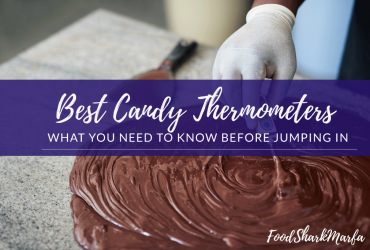
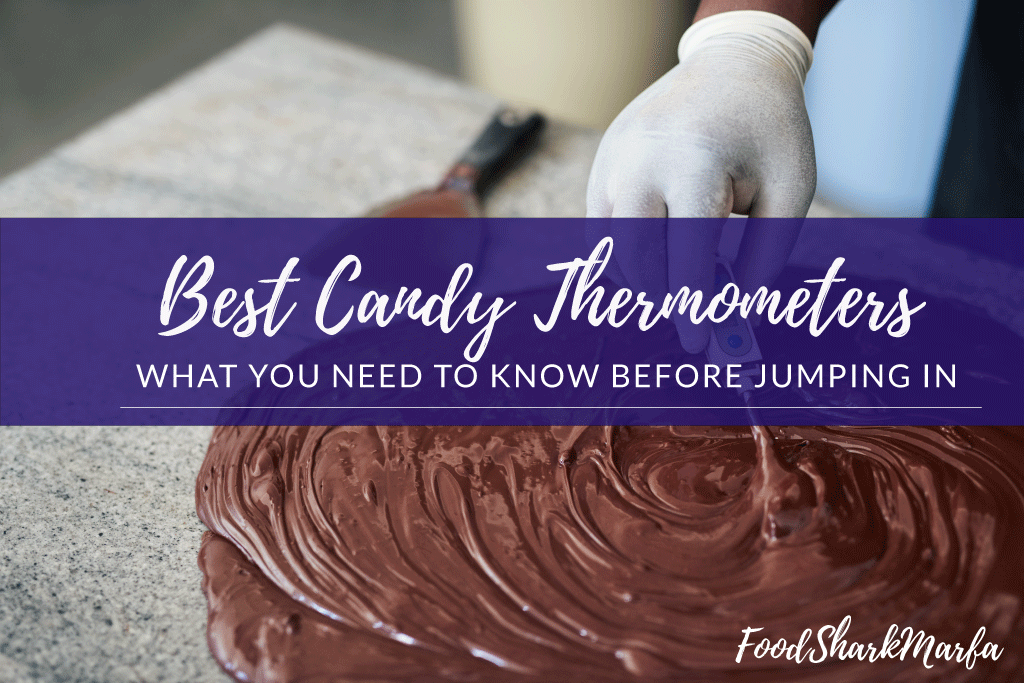
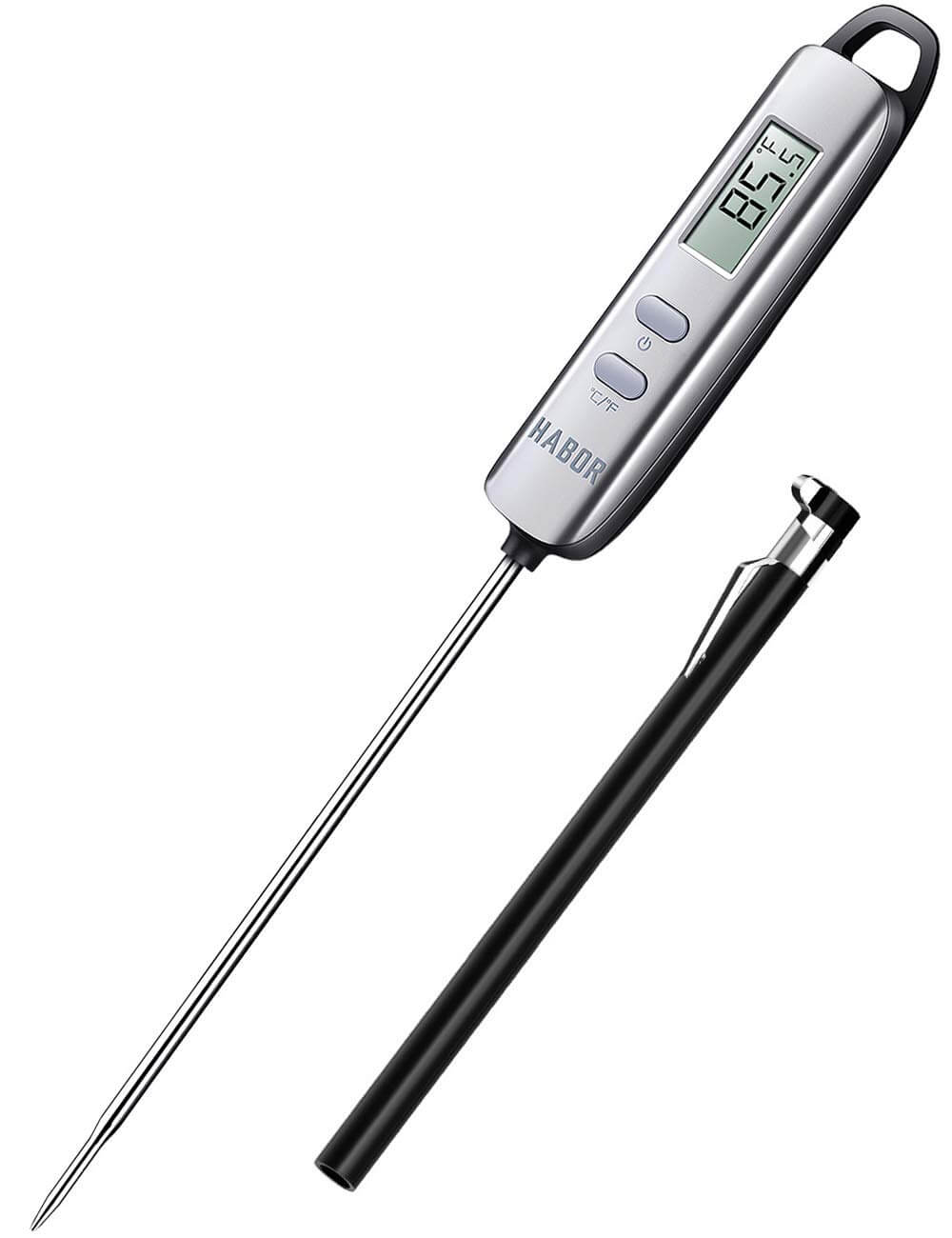
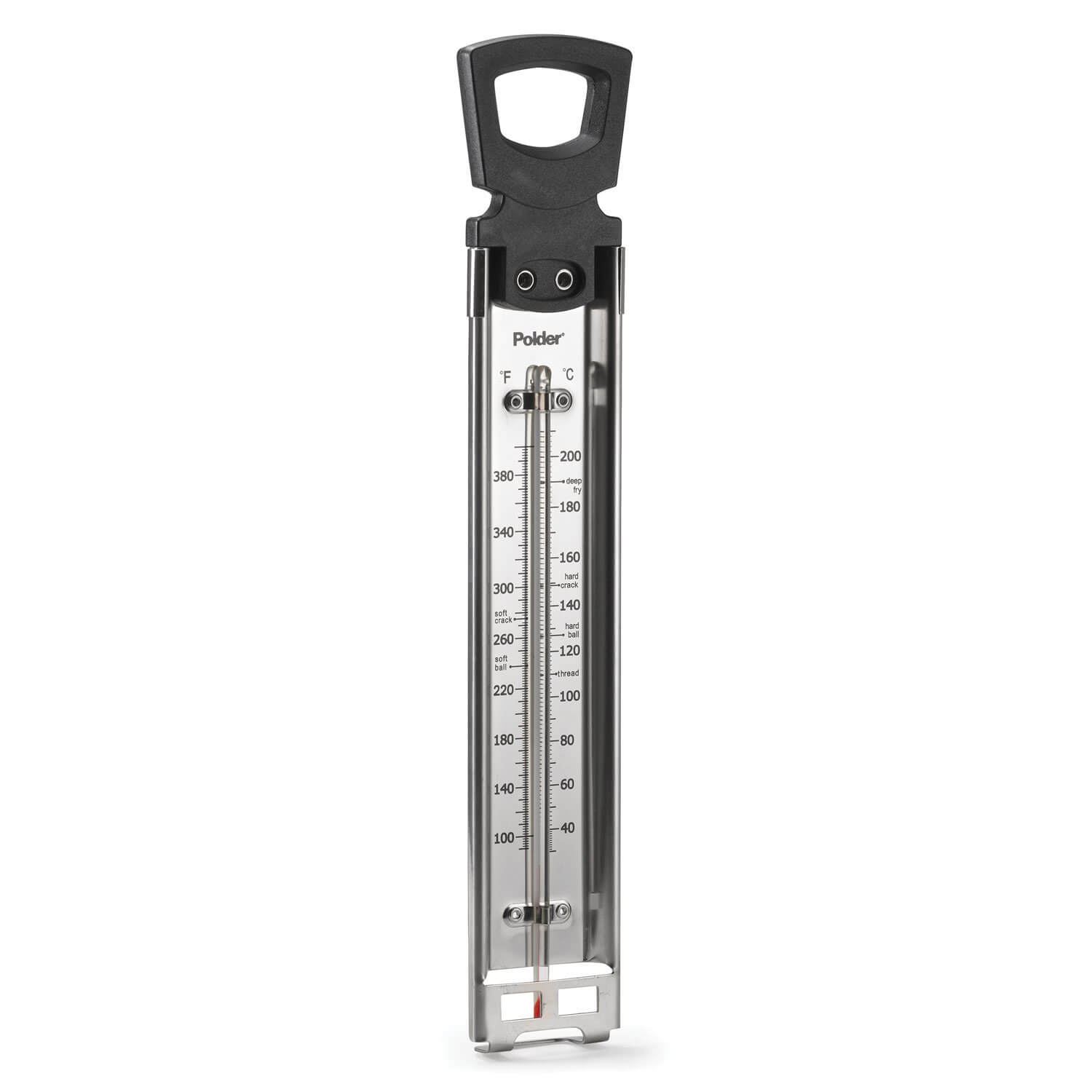


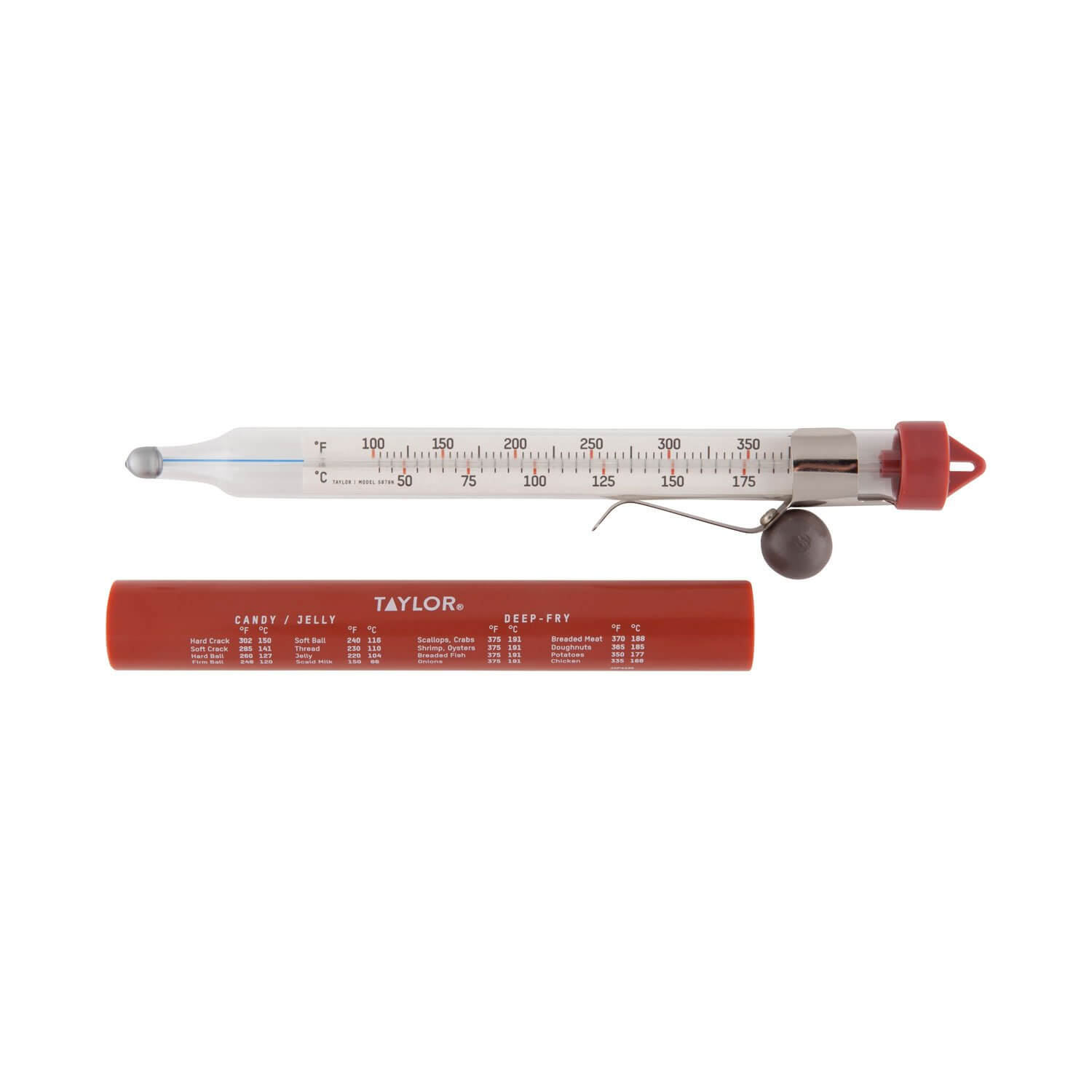
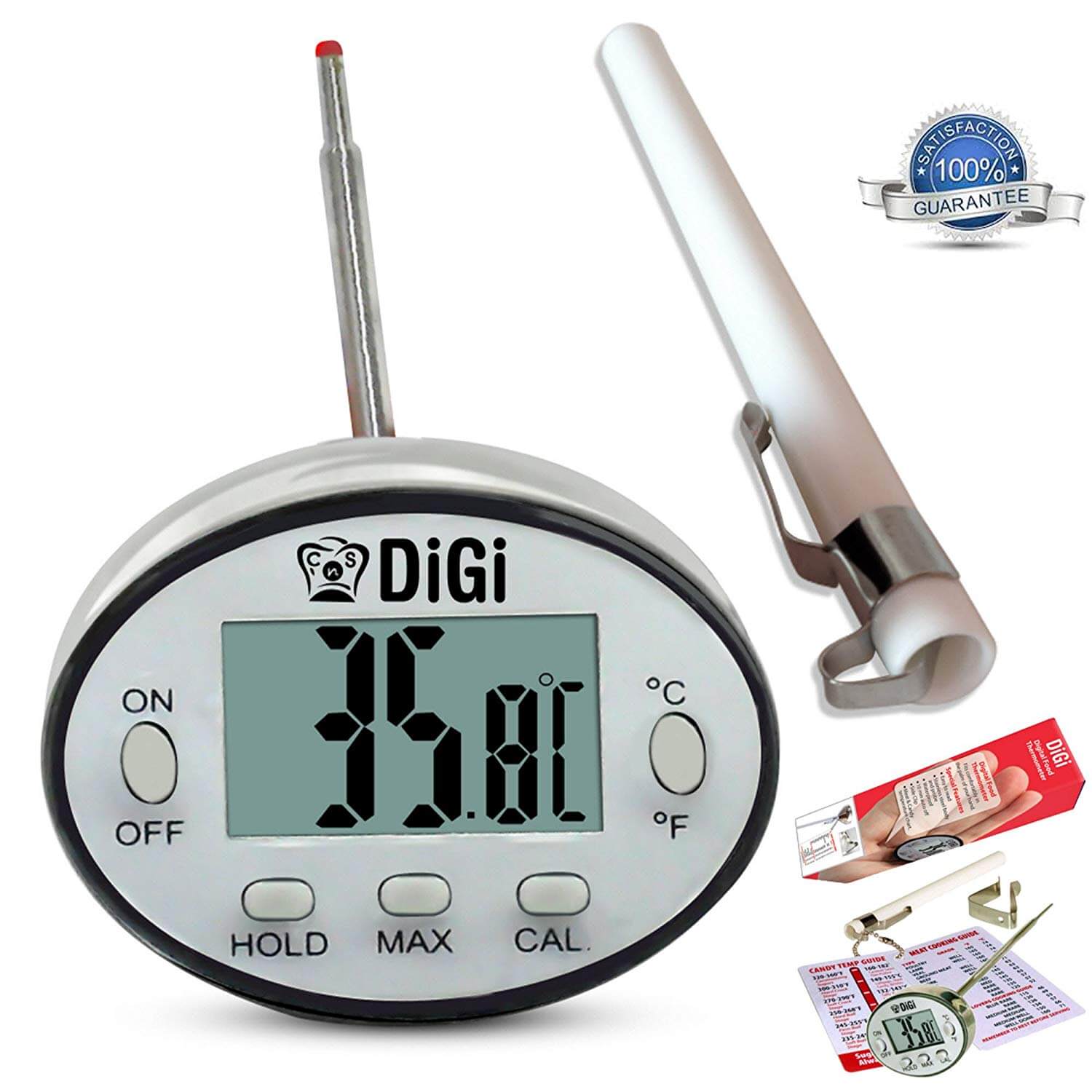
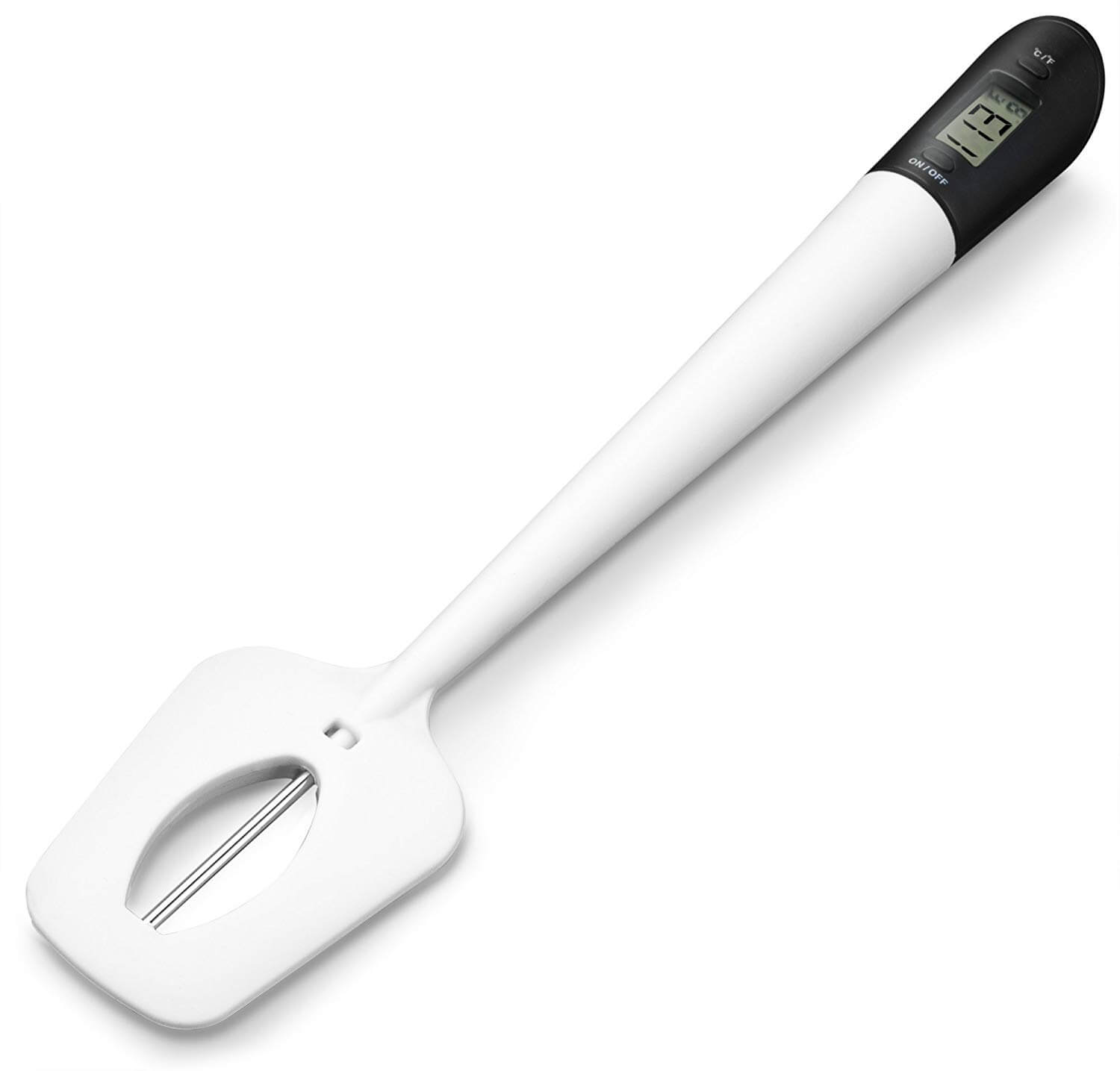
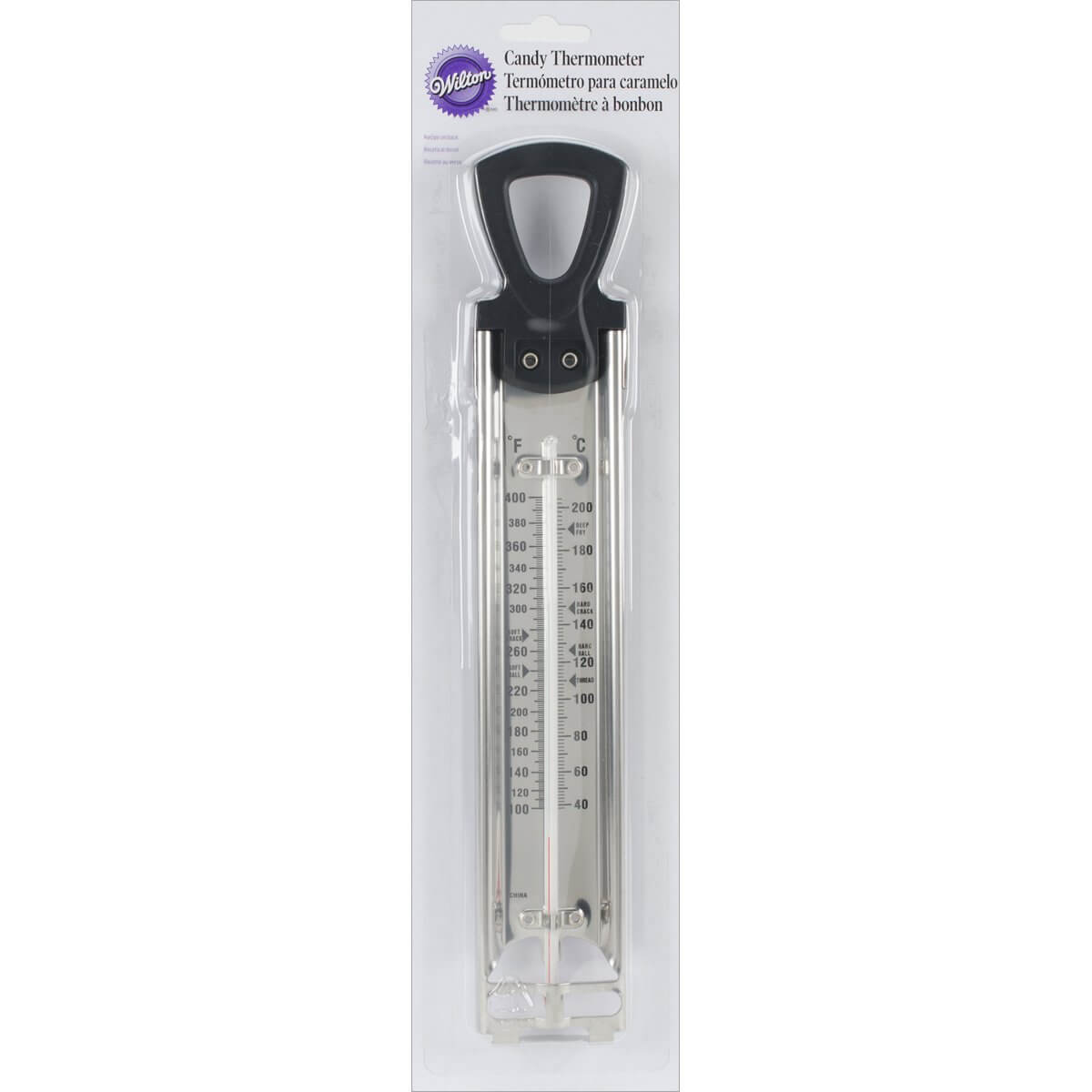
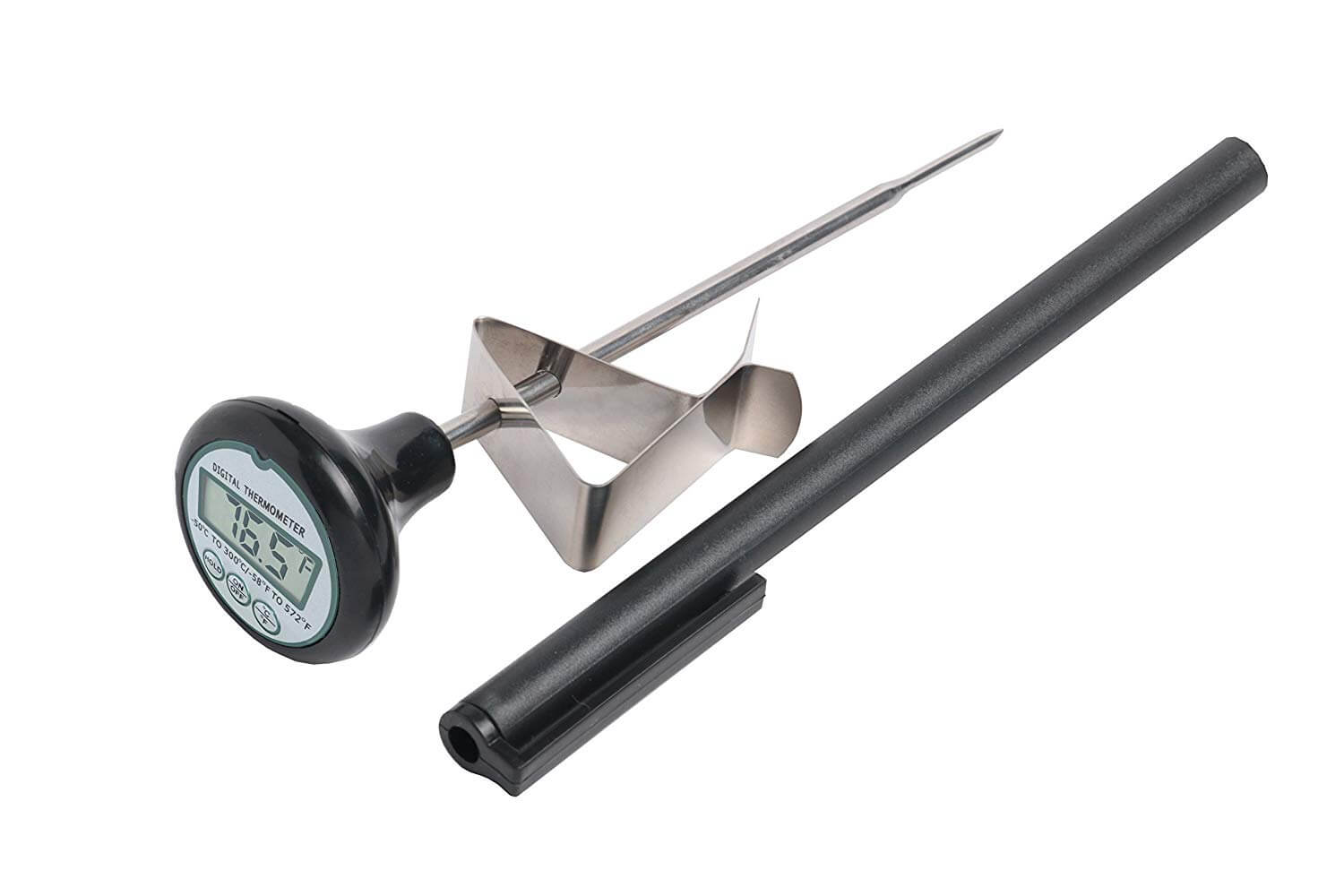
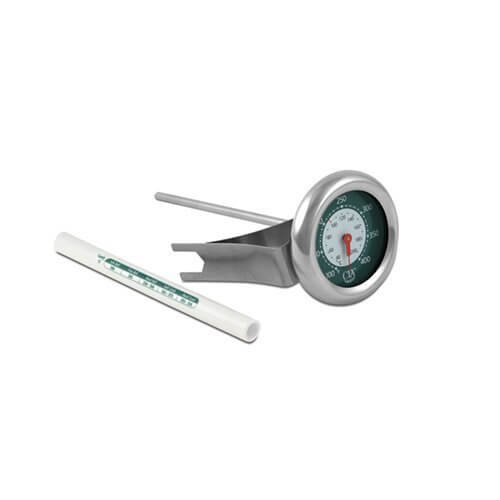

Related Posts
The 10 Best Sous Vide Machines in 2023
The 10 Best Digital Kitchen Scales in 2023
The 8 Best Soup Thermos in 2023